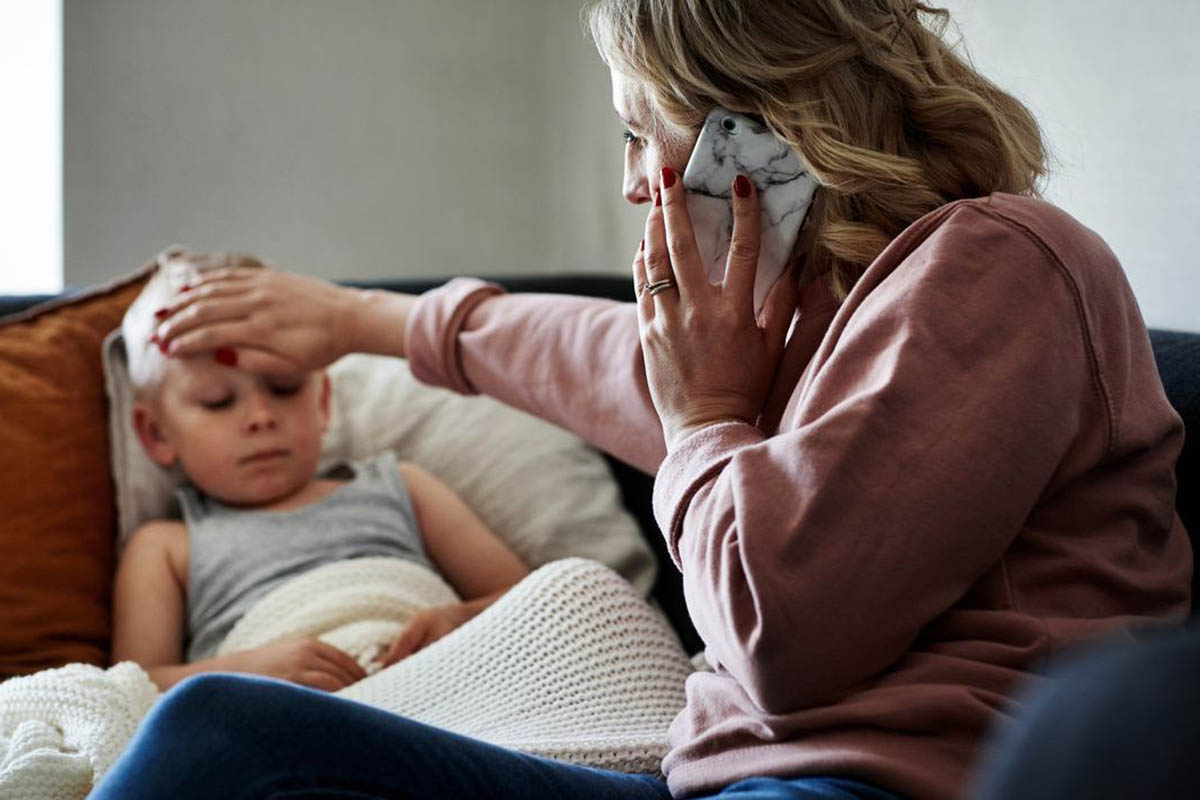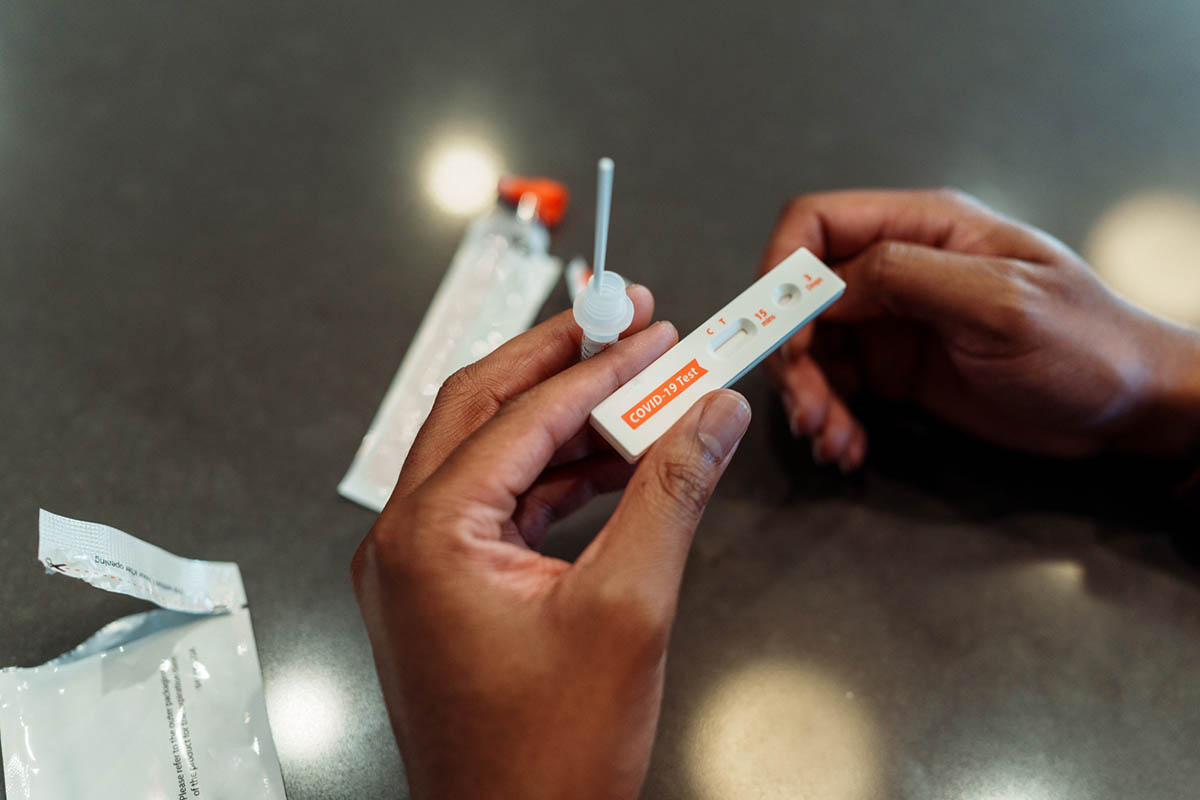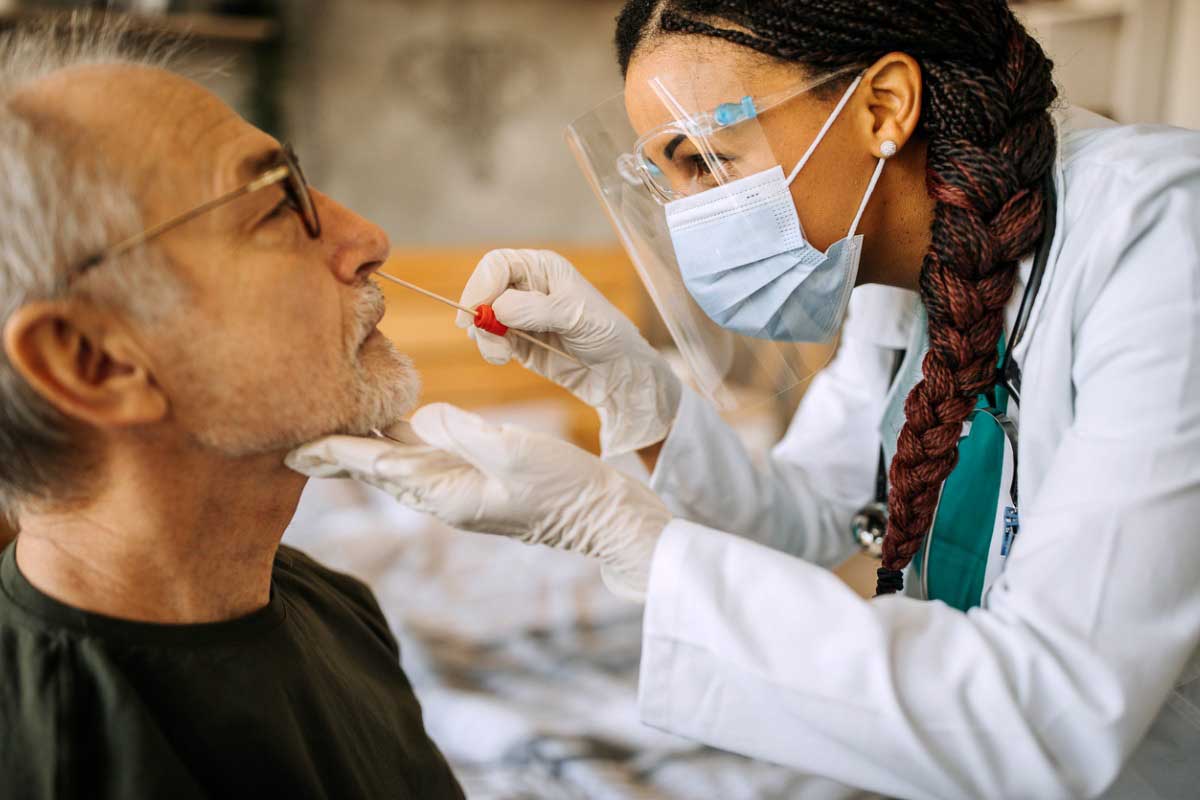
Prim Care Companion CNS Disord 2021;23(5):21cr03104
To cite: Singh K, Kaur J. Dental anxiety and PTSD during the COVID-19 pandemic: a dentist’s nightmare Prim Care Companion CNS Disord. 2021;23(5):21cr03104.
To share: https://doi.org/10.4088/PCC.21cr03104
© Copyright 2021 Physicians Postgraduate Press, Inc.
aDental Care of Harrisburg, Harrisburg, Pennsylvania
bDayanand Medical College and Hospital, Punjab, India
*Corresponding author: Kaynaat Singh, DDS, Dental Care of Harrisburg, 2323 Linglestown Rd, Ste 201A, Harrisburg, PA 17110 ([email protected]).
Dental anxiety is known to start early in life and can often lead to avoidance of oral hygiene and dental care, which can result in oral health problems and is associated with poor quality of life and well-being. Patients with high dental fear and anxiety are much more likely to delay or avoid visiting the dentist, and there is a high rate of cancellation and no shows among such patients.1,2
Patients with high dental anxiety can be difficult to treat, often requiring more time, and might have complex behavioral needs, leading to unpleasant experiences for both the patient and the treating facility staff. Treatment of this patient population is a high source of stress for dentists.3 This issue has become even more relevant during the coronavirus disease 2019 (COVID-19) pandemic wherein procedural anxiety is often compounded with anxiety related to masking policies and fear of getting an infection, including COVID-19. There are multiple reports4–6 of patients presenting to clinics and hospitals during the COVID-19 pandemic with varied mental health needs, which posed never-before-seen challenges and led to innovative treatment approaches in these presentations.
Here, we report an interesting and challenging case of a patient with a significant past psychiatric history, who presented to our dental clinic for root canal treatment for symptomatic irreversible pulpitis and symptomatic apical periodontitis. We discuss the challenges that we faced during the successful management and treatment of the patient’s dental and behavioral health needs.
Case Report
The patient is a 39-year-old White woman with a history of hypertension, posttraumatic stress disorder (PTSD), social phobia, and claustrophobia who presented to the outpatient dental clinic with severe dental pain localized to the right lower jaw. The patient stated she had been experiencing pain for the past 3 to 4 weeks, and it progressively got worse to the point that she was unable to sleep at night. She had been taking over-the-counter extra-strength acetaminophen, but it was no longer relieving her pain.
The patient reported not having been to a dentist’s office for a long time and attributed it to her long-standing history of social phobia and PTSD, which became worse when seeing someone wearing a mask. The patient had a history of sexual assault earlier in her life wherein the assailant was wearing a face mask. The patient added that while she understands the need for masking in the current pandemic, she found it extremely hard to leave the house, and seeing other people wearing masks, especially in close proximity, would trigger extreme anxiety and panic. The patient was not able to get her oral examination completed during the first visit and left midappointment complaining of panic symptoms including palpitation and difficulty breathing. The patient rescheduled the appointment for the following week. She was given handouts on helpful relaxation techniques and was counseled by a dental hygienist before her visit.
At the following visit, the extraoral examination was done, and no facial swelling or lymphadenopathy was noted. On further tests, tooth number 30 was tender to palpation and percussion; tooth reacted to endo ice with a lingering response as compared to the control teeth numbers 2 to 4 and 29 and 31. Blood investigations, including basic metabolic panel and complete blood count, were within normal limits, and no other comorbid medical issues were noted or reported.
On clinical examination, it was determined that tooth number 30 had gross caries with localized gingival inflammation, and the patient was diagnosed with symptomatic irreversible pulpitis and symptomatic apical periodontitis. Before any further treatment could be started, the patient again reported severe anxiety with racing heart and breathlessness, and the treatment had to be halted for the second time. It was determined that the patient would not be able to proceed with her much-needed dental treatment without the help of psychiatric or psychological intervention. She was sent home with prescriptions for amoxicillin 500 mg 3 per day for 7 days (prophylaxis of infection) and ibuprofen 600 mg every 4 to 6 hours as needed for pain.
The patient was advised to follow up with her psychiatrist. She was started on lorazepam 1 mg 3 times per day along with escitalopram 10 mg once per day by her outpatient psychiatrist for her anxiety symptoms. The patient was advised to take her lorazepam dose a half an hour before the scheduled dental appointment. The patient also used cognitive-behavioral therapy (CBT) skills that were taught to her by her therapist in trauma-focused CBT sessions, specifically geared toward her fear of masks.
The patient was able to make a follow-up appointment after 1 month and was finally able to complete her treatment. She received root canal treatment for symptomatic irreversible pulpitis, which was completed in a single sitting. This was a unique patient experience from a dental practice standpoint, which was challenging because of the patient’s extensive trauma and comorbid psychiatric history. This case emphasizes the need for timely psychiatric intervention as well as the importance for dentists to be psychologically minded toward specific patient needs, especially given the added stress during the COVID-19 pandemic.
Discussion
Dental anxiety involves the worries related to receiving appropriate dental care, which commonly leads to poor oral health and avoiding dental treatment. This anxiety can often result in worsening of oral/dental health and overall quality of life. It is estimated that about 3% to 16% of adults suffer from dental phobia.7–11 Various factors can contribute to the worsening of dental procedural anxiety, such as direct conditioning through negative dental experiences, different patient personality types, pain, and indirect learning through the influence of other people or the media, which often includes anxiety-provoking coverage of the COVID-19 pandemic.11–13
Anxiety is often closely linked to painful stimulus and increased pain perception, and, thus, these patients experience increased chronic pain leading to a longer-lasting memory of the painful experience. Irreversible pulpitis is a complex and challenging medical condition that leads to spontaneous pain. Such pain often compels the patients to seek emergency dental care. However, the fear of pain during the procedure, and sometimes even after it, often leads to delay or avoidance of treatment. It is therefore prudent for the dentist to look for signs and symptoms of anxiety and fear surrounding the procedure during initial patient interaction.
The etiology for dental anxiety is multifactorial; hence, there is no direct way to address this rising clinical issue. Proper evaluation of the patient and identification of the source and level of anxiety can enable the dentist in deciding on a proper treatment plan. It is also important for the dentist to obtain a careful medical and psychiatric history for the patient before initiating a treatment plan.14,15
Dental procedural anxiety can be managed by psychotherapeutic interventions, pharmacologic interventions, or a combination of both. Psychotherapeutic interventions are either behaviorally or cognitively oriented, and the use of CBT is highly successful in the management of extremely anxious patients. Case reports, systematic reviews, and meta-analyses indicate that CBT is useful in addressing dental anxiety and phobia. Dentists need to be mindful and make the effort to integrate this therapy into practice.14,15 The COVID-19 pandemic has taken a huge toll on the mental health of patients and people all over the world, leading to a mental health crisis. There has been an uptick in the number of psychiatric hospitalizations, which has put a huge stress on hospital and community resources.16,17
Dentists are at high risk of contracting the COVID-19 virus due to the unique nature of dentistry, more specifically, exposure to aerosols and droplets. When it comes to dental emergencies, it is very important to maintain operational urgent dental care services to help reduce the burden on our health care systems. Health care practitioners such as dentists performing emergency treatments are challenged with increased risks of contracting the viral infection, which adds to the stress for both the dentists and the patients they are serving.18 Health care providers in various settings need to be mindful of both the physical and behavioral health needs of the patients. Medical and dental education should be geared toward being especially mindful of the stress that patients are going through in this day and age and the co-occurring physical and mental health challenges that they might face in patient care.19,20
Conclusion
Procedural specialties, especially dentists, can benefit immensely from better training geared toward understanding and addressing the behavioral health needs of the patients they are serving. Prompt assessment and management of anxiety disorders in patients in the dental clinic can help improve their pre- and post-procedure experiences and recovery and improve their overall quality of life.
Received: August 16, 2021.
Published online: October 21, 2021.
Potential conflicts of interest: None.
Funding/support: None.
Patient consent: Consent was received from the patient to publish the case report, and information has been de-identified to protect anonymity.
References (20)

- Armfield JM, Spencer AJ, Stewart JF. Dental fear in Australia: who’s afraid of the dentist? Aust Dent J. 2006;51(1):78–85. PubMed CrossRef
- Schuller AA, Willumsen T, Holst D. Are there differences in oral health and oral health behavior between individuals with high and low dental fear? Community Dent Oral Epidemiol. 2003;31(2):116–121. PubMed CrossRef
- Brahm CO, Lundgren J, Carlsson SG, et al. Dentists’ views on fearful patients: problems and promises. Swed Dent J. 2012;36(2):79–89. PubMed
- Jolly TS, Batchelder E, Baweja R. Mental health crisis secondary to COVID-19–related stress: a case series from a child and adolescent inpatient unit. Prim Care Companion CNS Disord. 2020;22(5):20l02763. PubMed CrossRef
- Li L. Challenges and priorities in responding to COVID-19 in inpatient psychiatry. Psychiatr Serv. 2020;71(6):624–626. PubMed CrossRef
- Jolly J, et al. Managing covid + ve patients on inpatient adolescent psychiatry unit- a unique challenge. Int J Ment Health. 2020;2:17–21.
- Enkling N, Marwinski G, Jöhren P. Dental anxiety in a representative sample of residents of a large German city. Clin Oral Investig. 2006;10(1):84–91. PubMed CrossRef
- Weinstein P, Shimono T, Domoto P, et al. Dental fear in Japan: Okayama Prefecture School study of adolescents and adults. Anesth Prog. 1992;39(6):215–220. PubMed
- Pohjola V, Rekola A, Kunttu K, et al. Association between dental fear and oral health habits and treatment need among university students in Finland: a national study. BMC Oral Health. 2016;16(1):26. PubMed CrossRef
- Quteish Taani DS. Dental fear among a young adult Saudian population. Int Dent J. 2001;51(2):62–66. PubMed CrossRef
- Appukuttan D, Subramanian S, Tadepalli A, et al. Dental anxiety among adults: an epidemiological study in South India. N Am J Med Sci. 2015;7(1):13–18. PubMed CrossRef
- Locker D, Liddell A, Dempster L, et al. Age of onset of dental anxiety. J Dent Res. 1999;78(3):790–796. PubMed CrossRef
- Jolly TS, Pandian GSDB, Batchelder E, et al. Posttraumatic stress disorder exacerbation as a result of public masking in times of COVID-19. Prim Care Companion CNS Disord. 2020;22(6):20l02828. PubMed CrossRef
- Wide Boman U, Carlsson V, Westin M, et al. Psychological treatment of dental anxiety among adults: a systematic review. Eur J Oral Sci. 2013;121(3 Pt 2):225–234. PubMed CrossRef
- Berggren U, Hakeberg M, Carlsson SG. Relaxation vs cognitively oriented therapies for dental fear. J Dent Res. 2000;79(9):1645–1651. PubMed CrossRef
- Vai B, Mazza MG, Delli Colli C, et al. Mental disorders and risk of COVID-19–related mortality, hospitalization, and intensive care unit admission: a systematic review and meta-analysis. Lancet Psychiatry. 2021;8(9):797–812. PubMed CrossRef
- Jain A, Bodicherla KP, Bashir A, et al. COVID-19 and obsessive-compulsive disorder: the nightmare just got real. Prim Care Companion CNS Disord. 2021;23(2):20l02877. PubMed CrossRef
- Wu KY, Wu DT, Nguyen TT, et al. COVID-19’s impact on private practice and academic dentistry in North America. Oral Dis. 2021;27(suppl 3):684–687. PubMed CrossRef
- Batchelder E, Jolly TS, Jain A, et al. Psychiatry residency application in the COVID-19 era: a medical student conundrum. Prim Care Companion CNS Disord. 2020;22(6):20com02831. PubMed CrossRef
- Haridy R, Abdalla MA, Kaisarly D, et al. A cross-sectional multicenter survey on the future of dental education in the era of COVID-19: alternatives and implications. J Dent Educ. 2021;85(4):483–493. PubMed CrossRef
Please sign in or purchase this PDF for $40.




